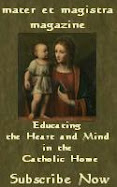Divine Mercy - A Guide from Genesis to Benedict XVI is just the right blend of philosophy, theology and lovely writing to make this a great book for meditative reading during Lent.
The author, Robert Stackpole (a theology professor at Redeemer Pacific College and Director of the JP2Institute of Divine Mercy), is not just an "expert" on the Catholic Church's teachings on Divine Mercy; he is also on-fire with the belief in God's Mercy and wants to share this faith and knowledge with his reader. This is clear on every page of this opus.
What is Divine Mercy? Here's how Stackpole defines it:
Divine Mercy, therefore, is the form that God's eternal love takes when He reaches out to us in the midst of our need and our brokenness. Whatever the nature of our need or our misery might be -- sin, guilt, suffering, or death -- He is always ready to pour out His merciful, compassionate love for us, to help in time of need.
What is Divine Mercy? Here's how Stackpole defines it:
Divine Mercy, therefore, is the form that God's eternal love takes when He reaches out to us in the midst of our need and our brokenness. Whatever the nature of our need or our misery might be -- sin, guilt, suffering, or death -- He is always ready to pour out His merciful, compassionate love for us, to help in time of need.
Stackpole builds a secure foundation for his belief in Divine Mercy by starting with scripture; from Genesis through Revelations, he explains all the occurrences of Divine Mercy as well as the meaning for this great gift from God to humble humanity.
Once the scriptural base is dealt with, Stackpole than turns to the lives of the saints -- primarily fathers and doctors of the Church -- to elucidate the Catholic teachings on Divine Mercy. Saints Augustine, Bernard of Clairvaux, Thomas Aquinas, Catherine of Siena, Francis of Assisi, John Edues, Margaret Mary Alacoque, Alphonosus Liguori, Therese of Lisieux and Blessed Dina Belanger of Quebec are the Catholic Church's more prolific writers/explainers of Divine Mercy. Stackpole clearly and completely describes the saints' lives, works and beliefs regarding Mercy.
Of course, no book about Divine Mercy would be complete without explaining St. Faustina Kowalska's private revelations and John Paul the Great's teachings on his fellow Pole's writings. Thanks to John Paul the Great, the Catholic world has the opportunity to celebrate Divine Mercy on the Sunday following Easter (this year, April 11th).
Stackpole concludes this updated edition by including Pope Benedict XVI's many teachings on God's Mercy. Stackpole summarizes these pontifical teachings by the message that all Catholics, particularly the young, must be "heralds" of the message of God's mercy and love to ALL mankind.
I particularly like that at the end of each chapter, the author includes study questions -- which help me focus on the important points of the writings -- and then concludes with a discussion starter, or I would say, a "meditation question". These discussion starters make me look deeper than the writings ... into myself and my relationship with God ... to help steer me toward a greater love of God, my Church and be able to "preach the good news to the Nations".
Highly recommend this for high-schoolers and older, particularly during Lent, who want to deepen their understanding of exactly WHY Jesus died on the Cross and what it means for each of us today.
This review was written as part of the Catholic book Reviewer program from The Catholic Company (where I received a free copy of Divine Mercy with the promise to write a truthful review). Visit The Catholic Company to find more information on Divine Mercy: A Guide from Genesis to Benedict XVI and to purchase the resources mentioned in this review.
Stackpole, Robert -- Divine Mercy: A Guide from Genesis to Benedict XVI. 2009. Marian Press (Stockbridge, MA). ISBN: 978-1-59614-208-4. paperback 275 pages.




 ...
... 




No comments:
Post a Comment